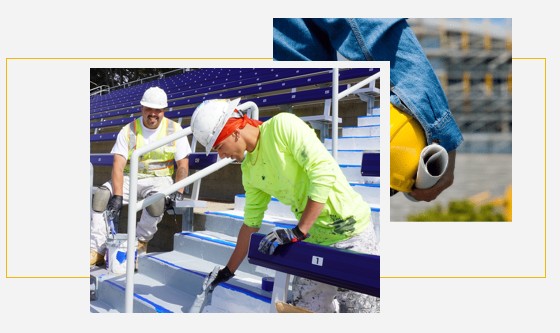Renovating historic buildings plays a vital role in preserving the cultural identity of our communities while delivering a range of economic, environmental, and social benefits. These projects honor the craftsmanship and character of earlier eras, breathe new life into aging structures, and create vibrant spaces that serve modern needs. They also offer unique opportunities to blend legacy with innovation in ways that strengthen community pride and foster long-term sustainability.
The Importance Of Historic Preservation
Preservation benefits extend beyond maintaining old structures. They embody the spirit of a community. Historic preservation involves restoring and maintaining buildings that hold historical significance, often seen in historic commercial buildings that tell stories of past eras. By engaging in historic preservation, we safeguard cultural heritage and ensure that these narratives remain vibrant and accessible to future generations.
Advantages Of Renovating Historic Buildings
Renovating historic buildings offers numerous advantages that benefit both the property owner and the community at large. This effort helps retain the architectural integrity and aesthetic charm of structures that define the landscape.
- Cultural Significance: Preserving landmarks maintains a tangible connection to the past, allowing residents and visitors to experience history firsthand.
- Economic Revitalization: Renovating historic commercial buildings can spur economic growth by attracting businesses and tourism.
- Environmental Sustainability: Refurbishing existing buildings is often more sustainable than new construction due to reduced resource consumption and waste production.
Revitalizing Communities Through Renovation Projects
Community revitalization efforts often hinge on successful renovation projects. By breathing new life into aging structures, cities like Salinas can foster a sense of pride and create vibrant, economically stable environments.
How Adaptive Reuse Is A Modern Approach To Historical Renovation
Adaptive reuse entails repurposing heritage buildings for modern needs while respecting their historic value. This approach allows communities to maintain the essence of historical buildings while adapting them for current usage. It often involves converting buildings into mixed-use spaces that accommodate retail, office, and residential needs.
Landmark Restoration & Its Community Impact
Landmark restoration has a profound impact on Salinas’ community, helping to instill a sense of pride while providing economic opportunities. These projects create jobs, draw tourists, and can lead to increased property values, reinforcing the overall economic stability of the area.
Exploring Preservation Benefits Through Case Studies
Analyzing successful historical renovation projects offers insight into the tangible benefits of preservation. Examples from various communities can illustrate how traditional structures have been transformed into thriving commercial and public spaces, benefiting local economies and enhancing community engagement.
The Role Of Government & Local Agencies
Government support is instrumental in the success of preservation efforts. By providing incentives and funding, local agencies can assist property owners in undertaking renovation projects. This collaboration helps ensure that preservation remains a community priority.
Common Challenges In Preserving Historic Structures
Despite the many benefits, renovating historic buildings presents challenges. Property owners must navigate regulatory requirements, balance modern functionality with historic authenticity, and manage potentially higher restoration costs.
- Regulatory Compliance: Adhering to preservation standards and guidelines.
- Cost Management: Addressing increased costs associated with using historical materials and techniques.
- Balancing Needs: Merging modern amenities with historical features without compromising either aspect.
Having a trusted general contractor with experience in remodeling historic buildings can make a big difference in overall costs for property owners.
Coordinating A Historic Renovation Project
A well-executed historic renovation project requires meticulous planning and coordination. This involves collaborating with architects, engineers, and historians to ensure historical accuracy while meeting modern building standards. Essential steps include:
- Assessment: A thorough evaluation of the building’s condition to identify areas needing restoration.
- Design: Developing plans that balance historic integrity with contemporary function.
- Execution: Implementing restoration techniques that preserve original materials and craftsmanship.
Preserving Our Future By Honoring Our Past
For property owners in Salinas and similar areas, the investment in renovating historic buildings is more than a financial consideration; it’s a commitment to cultural stewardship and sustainable economic development. Ausonio in Salinas stands ready to assist in these endeavors, providing expertise and a deep commitment to the community’s growth and heritage preservation. Engage with us to transform your vision into a reality that both honors history and revitalizes our shared future.
